Introduction
Managing data efficiently is a key factor in the world of business. Excel, with its unmatched versatility and data management capabilities, is integral to leveraging data for this purpose. However, as the complexity of our data grows, so does the likelihood of encountering a familiar nemesis lurking within data sheets: duplicates.
Knowing how to remove duplicates in Excel is crucial if you want to avoid duplicate entries from wrecking the integrity of your data, and undermining the credibility of spreadsheets. So, to help you maintain clean and reliable data, we have put together a guide that will show you how to delete duplicates in Excel like a pro.
Get ready to unlock the full potential of your data and boost your analytical prowess!
How Do I Find Duplicates in Excel?
More often than not, duplicates make data more difficult to analyze, causing a waste of time and resources. Redundant data is the last thing you want, especially if you’re handling large datasets. So before jumping into how to remove duplicates in Excel, know how you can identify duplicates correctly. Here’s how.
To find duplicates in Excel, you can follow these steps:
Step 1. Select the range of cells or columns where you want to identify duplicates.
Step 2. Go to the "Home" tab in the Excel ribbon.

Step 3. Look for the "Styles" group and click on the "Conditional Formatting" button.
Step 4. From the dropdown menu, choose "Highlight Cells Rules" and then select "Duplicate Values."
Step 5. A dialog box will appear with formatting options. You can choose a formatting style to highlight the duplicates.
Step 6. Click "OK" to apply the formatting.
Step 7. Excel will highlight the duplicate values within the selected range.
How to Remove Duplicates in Excel?
Excel comes with an in-built functionality that can assist you in removing repetitive entries from your dataset. Let's have a look at how to get rid of duplicates in Excel using this feature.
Remove Duplicates from a Single Column:
To remove duplicates from a single column in a dataset or a spreadsheet, here is a common approach.
Step1. Select the column containing the data with duplicates.

Step 2. Go to the "Data" tab in the Excel ribbon.
Step 3. Click on the "Remove Duplicates" button in the "Data Tools" group.


Step 4. A dialog box will appear with the option to select the columns to check for duplicates.
Step 5. Choose the desired column(s) and click "OK."

Excel will remove the duplicate values, keeping only the unique entries in the selected column.
Remove Duplicates from a Single Column:
To remove duplicates from a single column in a dataset or a spreadsheet, here is a common approach.
Step1. Select the column containing the data with duplicates.
Step 2. Go to the "Data" tab in the Excel ribbon.
Step 3. Click on the "Remove Duplicates" button in the "Data Tools" group.


Step 4. A dialog box will appear with the option to select the columns to check for duplicates.
Step 5. Choose the desired column(s) and click "OK."

Excel will remove the duplicate values, keeping only the unique entries in the selected column.
Remove Duplicates from Multiple Columns:
To remove duplicates from multiple columns in a dataset or a spreadsheet, you can follow similar approaches as mentioned before. Here's how you can do it:
Step 1. Select the range of cells or columns containing the data with duplicates.
Step 2. Follow the same steps as mentioned above for removing duplicates from a single column.
Step 3. In the dialog box, make sure to select all the columns that need to be considered when identifying duplicates.
Step 4. Excel will remove the rows that have identical values in all the selected columns, leaving only unique entries.
Remove Duplicate Rows:
To remove duplicate rows from a dataset or a spreadsheet, here is what you can do:
Step 1. Select the entire dataset, including headers if applicable.
Step 2. Go to the "Data" tab and click on the "Remove Duplicates" button.
Step 3. In the dialog box, select the columns that should be considered when identifying duplicates.
Step 4. Click "OK."
Step 5. Excel will remove the rows that have identical values in the selected columns, leaving only unique rows.
Advanced Filter option:
The "Advanced Filter" option is a feature available in various spreadsheet software, such as Microsoft Excel, Google Sheets, and LibreOffice Calc. It allows you to apply more complex filtering criteria to a dataset and extract specific records based on multiple conditions.
Here's how you can use the "Advanced Filter" option in Microsoft Excel as an example:
Step 1. Select the range of cells or columns containing the data.
Step 2. Go to the "Data" tab and click on the "Advanced" button in the "Sort & Filter" group.
Step 3. In the "Advanced Filter" dialog box, choose the option to "Copy to another location."
Step 4. Specify the criteria range and the copy destination for the unique values.
Step 5. Click "OK."
Step 6. Excel will filter the data based on the criteria and copy the unique values to the specified location.
Power Query Tool:
Excel's Power Query feature gives you the ability to import data from a variety of sources, as well as clean and alter that data. With this tool, you can easily know how to delete duplicates in Excel.
Step 1. Go to the "Data" tab and click on the "From Table/Range" button in the "Get & Transform Data" group.

Step 2. In the Power Query Editor window, select the columns you want to consider for duplicates.
Step 3. Go to the "Home" tab in the Power Query Editor and click on the "Remove Rows" button. From the dropdown, choose "Remove Duplicates."

Step 4. Close and load the query results into a new worksheet or overwrite the existing data.

Step 5. Excel will remove the duplicate rows based on the selected columns, leaving only unique entries.
These methods provide you with different options to learn how to remove duplicates in Excel data, allowing you to maintain clean and unique datasets for analysis and other purposes.
Excel Formulas That Can Be Used to Delete Duplicates in Excel Sheet
To delete duplicates in an Excel sheet, you can utilize various Excel formulas to identify and remove the duplicate values. Here are a few formulas you can use:
How to get rid of duplicates in Excel with Advanced Filter and Unique Formula:
Step 1. Use the Advanced Filter feature to extract unique values to a new range.
Step 2. In a separate column, enter the formula "=UNIQUE(range)" to extract unique values from the original range.
Step 3. Copy the unique values and paste them back into the original column to overwrite the duplicate values.
Step 4. Delete the temporary column with the unique formula.
Remove Duplicates with COUNTIF and IF Formula:

Step 1. In a separate column, use the formula "=IF(COUNTIF(range,cell)>1,"",cell)" where "range" is the range of cells to check for duplicates, and "cell" is the cell reference of the current row.
Step 2. The formula checks if the count of the value is greater than 1. If so, it leaves the cell blank; otherwise, it keeps the original value.
Step 3. Copy the formula down to apply it to all the cells.
Step 4. Copy the results and paste them back into the original column to overwrite the duplicate values.
Step 5. Delete the temporary column with the formula.
Remove Duplicates with INDEX and MATCH Formula:
The following steps will show you how to remove duplicates in Excel with INDEX and Match formula.
Step 1. In a separate column, use the formula "=IFERROR(INDEX(range, MATCH(0, COUNTIF($B$1:B1, range), 0)),"")" where "range" is the range of cells to check for duplicates, and "B" is the column where the formula is entered.
Step 2. The formula uses INDEX and MATCH to find the first occurrence of a unique value in the range.
Step 3. Copy the formula down to apply it to all the cells.
Step 4. Copy the results and paste them back into the original column to overwrite the duplicate values.
Step 5. Delete the temporary column with the formula.
Remember to adjust the formulas based on your specific range and column references. These formulas can help you identify and remove duplicates in Excel, giving you a clean dataset without duplicate entries.
What Are the Problems With Removing Duplicates in Excel?
While learning how to delete duplicates in Excel, make sure to stay focused and aware of certain pitfalls you may encounter in the process. While Excel is almost an impeccable tool when it comes to streamlining your data cleansing process, you may need to be mindful of certain considerations or complexities.
Risks involving data loss, impact on data structure and integrity, human error, etc., can hamper your efforts in maintaining accurate and reliable data in Excel.
1. Data Integrity: When removing duplicates, there is a risk of accidentally deleting valuable data if not done carefully. Always double-check to ensure accurate identification of duplicate entries lest you end up deleting valid entries.
2. Loss of Information: Deleting duplicate entries may result in the loss of information. It's essential to understand the data and the context in which duplicates occur to ensure that removing them will not impact the accuracy or completeness of the dataset.
3. Multiple Criteria: Excel's built-in features for removing duplicates primarily focus on single-column or single-criteria removal. However, in some cases, duplicates need to be identified based on multiple columns or criteria. Handling such scenarios may require custom formulas or more advanced techniques.
4. Case Sensitivity: By default, Excel treats text values as case-insensitive when identifying duplicates. This can lead to potential errors or overlooking duplicates if case sensitivity is important for your data. Additional steps or custom formulas may be needed to handle case-sensitive duplicates.
5. Conditional Formatting Limitations: Excel's conditional formatting feature can help highlight duplicates, but it doesn't directly remove them. After identifying duplicates through conditional formatting, you will still need to manually delete the duplicate entries or use other techniques to accomplish the removal.
6. Performance Issues: Working with large datasets containing a significant number of duplicates can impact Excel's performance. Excel may become slow or unresponsive while processing and removing duplicates. In such cases, it might be beneficial to explore alternative methods or consider using specialized tools like Power Query or VBA macros.
By being aware of these potential problems, you can take appropriate precautions and select the most suitable approach for removing duplicates in Excel while ensuring data accuracy and integrity.
How to Delete Duplicates in Excel Effectively?
Deleting duplicates in Excel is crucial for data accuracy. Learn how to effectively remove duplicate values for clean and streamlined spreadsheets.
1.Remove Duplicates:
- Excel provides a built-in feature called "Remove Duplicates" that allows you to easily eliminate duplicate entries.
- Select the range of data or columns where you want to remove duplicates.
- Go to the "Data" tab in the Excel ribbon and click on the "Remove Duplicates" button in the "Data Tools" group.
- In the dialog box, select the columns to check for duplicates and click "OK."
- Excel will delete the duplicate values, keeping only the unique entries in the selected range.
2. Advanced Filter:

- The Advanced Filter feature in Excel provides more flexibility in removing duplicates based on specific criteria.
- Select the range of data that contains duplicates.
- Go to the "Data" tab and click on the "Advanced" button in the "Sort & Filter" group.
- In the Advanced Filter dialog box, select the option to "Copy to another location."
- Specify the criteria range and the copy destination for the unique values.
- Click "OK."
- Excel will filter the data based on the criteria and copy the unique values to the specified location, effectively removing the duplicates.
3. Pivot Table:

- Utilizing a PivotTable can help identify and remove duplicates in Excel.
- Create a PivotTable using the dataset that contains duplicates.
- Place the column(s) with potential duplicates in the "Rows" or "Columns" area of the PivotTable.
- Check the PivotTable for any duplicated values.
- Manually delete or modify the duplicates directly in the PivotTable.
- The changes made in the PivotTable will reflect in the original dataset, effectively removing the duplicates.
4. VBA (Visual Basic for Applications):
- For more complex scenarios, you can use VBA macros to automate the process of deleting duplicates.
- Write a VBA macro that loops through the data, identifies duplicates, and removes them based on specific criteria.
- Custom VBA code allows you to implement complex logic or handle unique requirements when removing duplicates.
These methods provide efficient ways to delete duplicates in Excel, allowing you to clean up your data and work with accurate and unique information. Choose the method that best suits your needs based on the complexity of your dataset and the level of customization required.
Conclusion
Removing duplicates is an essential task when working with large datasets to ensure data accuracy and eliminate redundancy. Now that you know how to remove duplicates in Excel, it’s time to implement your knowledge and enhance it further, too.
Whether you're a beginner looking to learn the basics of Excel or an experienced user seeking to enhance your business analytics and intelligence capabilities,, the "Business Analytics For Strategic Decision Making" course is an excellent way to upgrade your skills and knowledge to emerge at the top of your field.
It covers a wide range of topics, including data analysis, statistical modeling, data visualization, and strategic decision-making processes. By enrolling in this course, you can gain insights into leveraging Excel's powerful features for data analysis and develop a comprehensive understanding of business analytics concepts.
FAQ’s
Q1. How can I undo the removal of duplicates in Excel?
Ans:- Unfortunately, there is no direct undo option once duplicates are removed in Excel. Therefore, it's recommended to save a backup of your data before performing any duplicate removal operations. By doing so, you can revert back to the original data if needed.
Q2. How to remove duplicates in Excel across multiple worksheets?
Ans:- Yes, you can remove duplicates across multiple worksheets in Excel. To do this, you can either copy and paste the data from different worksheets into a single worksheet, then remove duplicates from the consolidated data, or use advanced techniques like Power Query to combine and remove duplicates from multiple data sources.
Q3. Are there any third-party add-ins or tools available for removing duplicates in Excel?
Ans:- Yes, there are various third-party add-ins and tools available that can enhance the duplicate removal process in Excel. These add-ins often provide advanced algorithms, additional functionalities, and automation options to streamline the process and handle more complex duplicate scenarios.
Q4. Who can benefit from taking a business intelligence online course?
Ans:- A business intelligence online course can benefit business professionals, analysts, data scientists, managers, and anyone interested in understanding and leveraging data for better decision-making. Whether you work in marketing, finance, operations, or any other field, gaining business intelligence skills can enhance your analytical capabilities and give you a competitive edge.
Q5. What can I expect to learn in business intelligence analysis courses online ?
Ans:- In business intelligence analysis courses online, you can expect to learn about various aspects of business intelligence, including data collection, data cleaning and preparation, data analysis techniques, data visualization tools, and reporting methods.
You will also gain an understanding of key concepts such as data warehousing, data modeling, and data governance, which are essential for effective business intelligence implementation. To look out for better courses, just search for business intelligence analyst courses online.
Data Analyst Course
Upcoming Batches
Trending Courses
Cyber Security
- Introduction to cybersecurity
- Cryptography and Secure Communication
- Cloud Computing Architectural Framework
- Security Architectures and Models
Upcoming Class
-1 day 01 Jul 2025
QA
- Introduction and Software Testing
- Software Test Life Cycle
- Automation Testing and API Testing
- Selenium framework development using Testing
Upcoming Class
2 days 04 Jul 2025
Salesforce
- Salesforce Configuration Introduction
- Security & Automation Process
- Sales & Service Cloud
- Apex Programming, SOQL & SOSL
Upcoming Class
1 day 03 Jul 2025
Business Analyst
- BA & Stakeholders Overview
- BPMN, Requirement Elicitation
- BA Tools & Design Documents
- Enterprise Analysis, Agile & Scrum
Upcoming Class
9 days 11 Jul 2025
MS SQL Server
- Introduction & Database Query
- Programming, Indexes & System Functions
- SSIS Package Development Procedures
- SSRS Report Design
Upcoming Class
9 days 11 Jul 2025
Data Science
- Data Science Introduction
- Hadoop and Spark Overview
- Python & Intro to R Programming
- Machine Learning
Upcoming Class
2 days 04 Jul 2025
DevOps
- Intro to DevOps
- GIT and Maven
- Jenkins & Ansible
- Docker and Cloud Computing
Upcoming Class
-1 day 01 Jul 2025
Hadoop
- Architecture, HDFS & MapReduce
- Unix Shell & Apache Pig Installation
- HIVE Installation & User-Defined Functions
- SQOOP & Hbase Installation
Upcoming Class
2 days 04 Jul 2025
Python
- Features of Python
- Python Editors and IDEs
- Data types and Variables
- Python File Operation
Upcoming Class
17 days 19 Jul 2025
Artificial Intelligence
- Components of AI
- Categories of Machine Learning
- Recurrent Neural Networks
- Recurrent Neural Networks
Upcoming Class
16 days 18 Jul 2025
Machine Learning
- Introduction to Machine Learning & Python
- Machine Learning: Supervised Learning
- Machine Learning: Unsupervised Learning
Upcoming Class
23 days 25 Jul 2025
Tableau
- Introduction to Tableau Desktop
- Data Transformation Methods
- Configuring tableau server
- Integration with R & Hadoop
Upcoming Class
3 days 05 Jul 2025



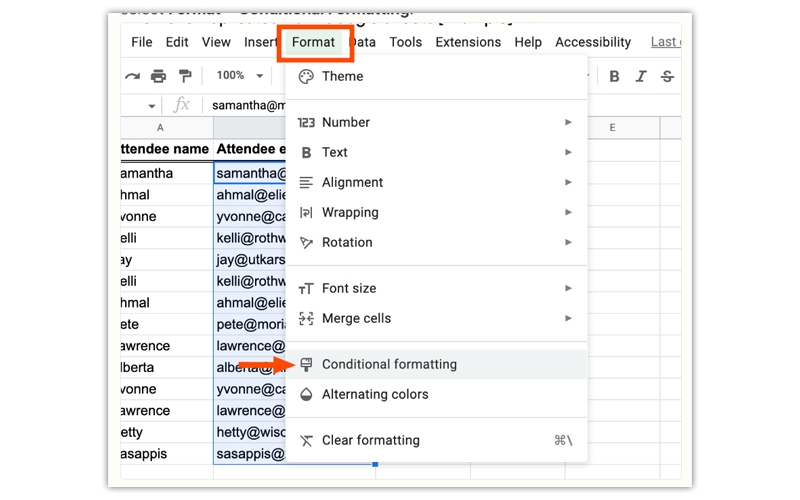
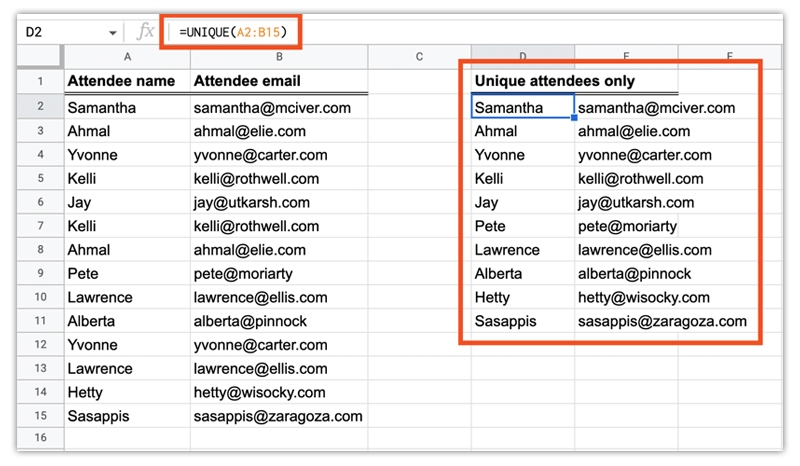

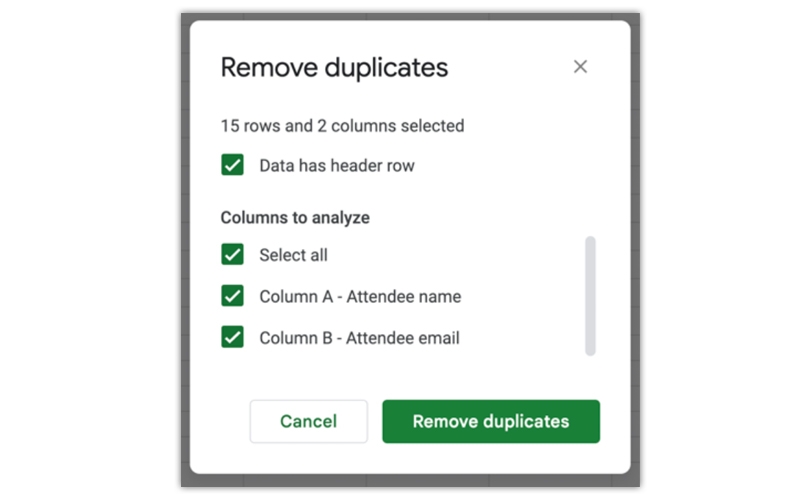
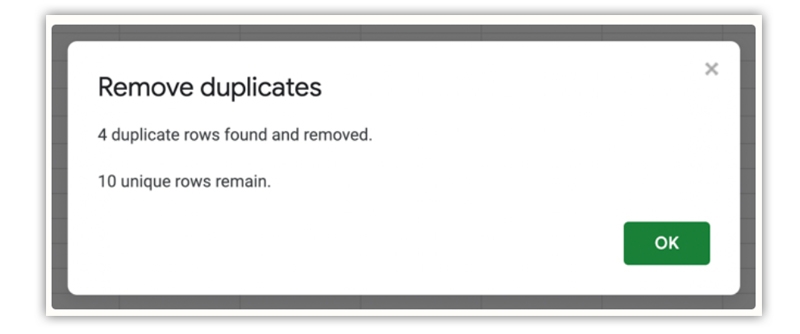

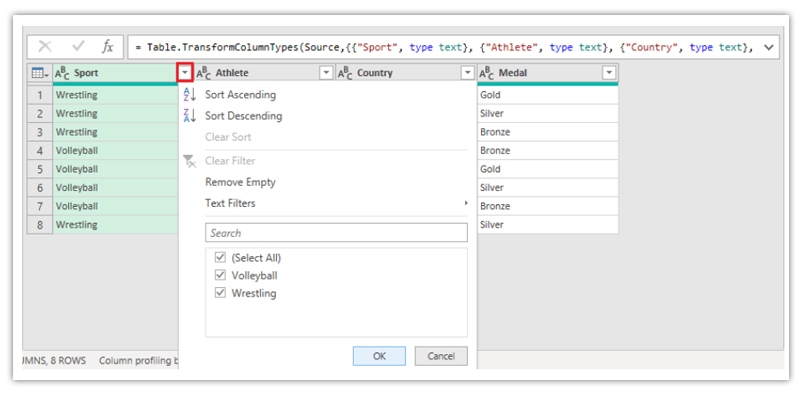
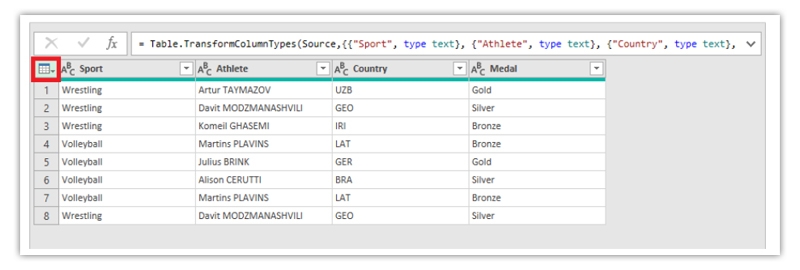


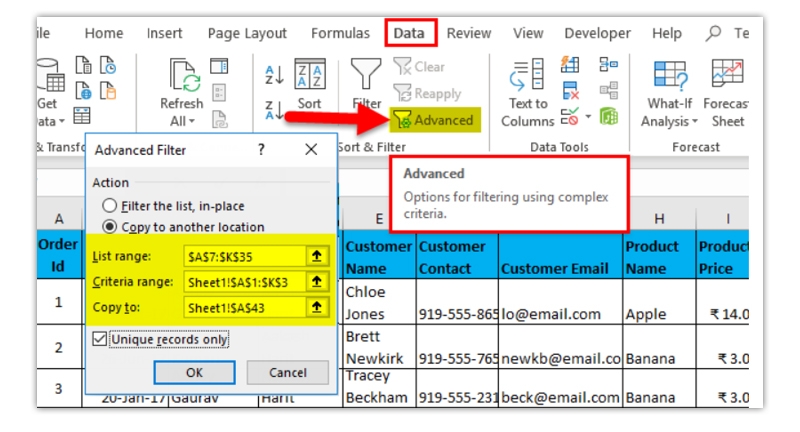
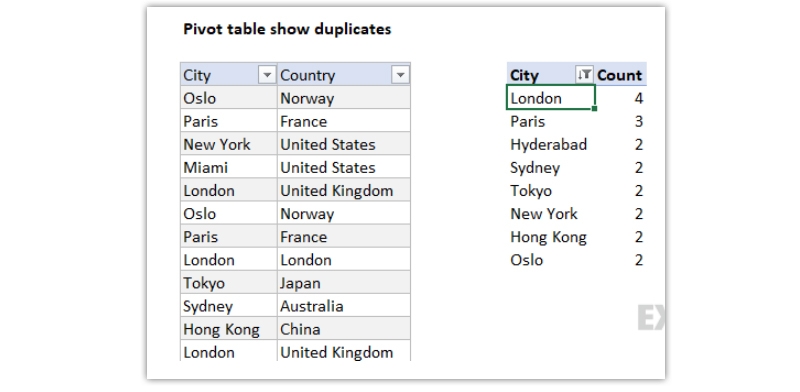



















![Data Analytics Salary in 2025 [How much Experienced & Freshers make!] image](https://assets.janbasktraining.com/blog/uploads/images/Data_Analyst_Salary_Know_everything__Skyrocket_your_salary_1.jpg)
![Top 200+ Excel Shortcuts Keys (A to Z)[2025] image](https://assets.janbasktraining.com/blog/uploads/images/Excel_Shortcut_Keys_that_You_Should_Know_1_2.jpg)
Caden Thomas
The blog was super informative for me. Helped me understand how to remove the excel duplicates in depth.
JanbaskTraining
Janbask: Glad you enjoyed the blog.Thank you for the feedback.
Maximiliano Jackson
An extremely researched and nicely curated blog. Please write more about other used excel formulas. Thankyou Janbask!
JanbaskTraining
Janbask: Thank you for your kind feedback.
Holden White
I enjoyed every bit of this blog about how to remove duplicates in excel. However, I want to learn more about the Excel courses one can do, can you please write about it as well? Thanks!
JanbaskTraining
Janbask: Thank you for your comments.
Paxton Harris
Hi, Great blog about the Excel duplicacy! Learned a lot about key concepts of excel.
JanbaskTraining
Janbask: Thank you for your comment and for joining our community.
Nash Martin
I was looking for an in-depth blog on the topic. The blog provided all the information related to removing duplicates in excel, Thanks.
JanbaskTraining
Janbask: Thank you for your kind words and support!